OR/13/053 Formational bases
| Woods, M A, Haslam, R B, Mee, K, Newell, A J, and Terrington, R L. 2013. A guide to a new Geographical Information System for the Chalk of the Thames Basin: The Thames Chalk Information System (TCIS). (FutureThames cross-cutting Programme). British Geological Survey Internal Report, OR/13/053. |
The gb_50_bedrock layer is a polygon shapefile which includes formation bases and tops, in addition to many non-geological boundaries between maps of different generations and various combinations of formations. An example of the resulting patchwork of polygons is shown below. For example, the base Lewes Chalk is included in five different combinations of single or undifferentiated formations is shown below:
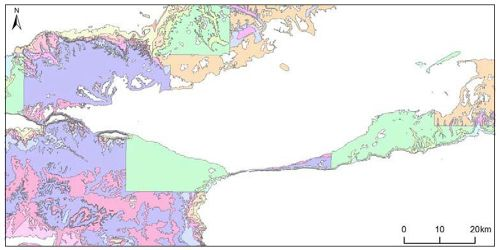
For example, the base Lewes Chalk is included in five different combinations of single or undifferentiated formations is shown below:

For modelling purposes we require only true stratigraphic contacts as polylines (which can be attributed with an elevation value) along formation bases (or formation tops), an example of the desired output which has been processed from the gb_50_bedrock map above is shown below. All non-geological contacts have been removed and gb_50_bedrock polygons have been processed into polylines along formation bases (or tops).
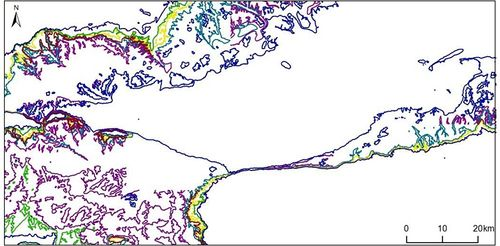
Method
- Polygons from gb_50_bedrock were extracted using GP_EQ_D = ‘CHALK GROUP’.
- Polygons from the output above were dissolved on LEX_D to remove sheet boundaries and create 36 multipart features for Chalk Formations.
- Polygons were converted to a polyline feature class selecting the option to identify and store polygon neighbouring information.
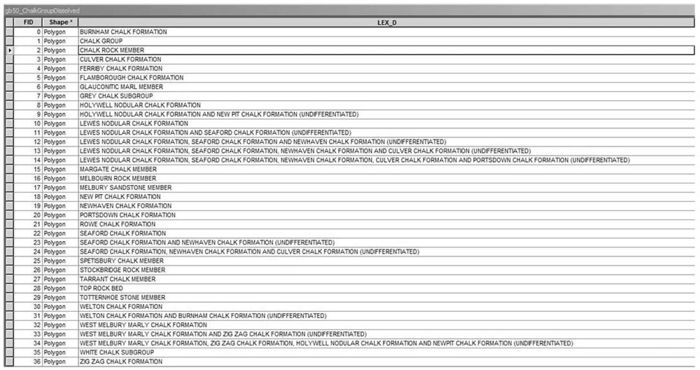
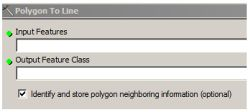
This generated a polyline shapefile with 142 features representing boundaries between different lithostratigraphical units (single or multiple undifferentiated features) or non-geological features.
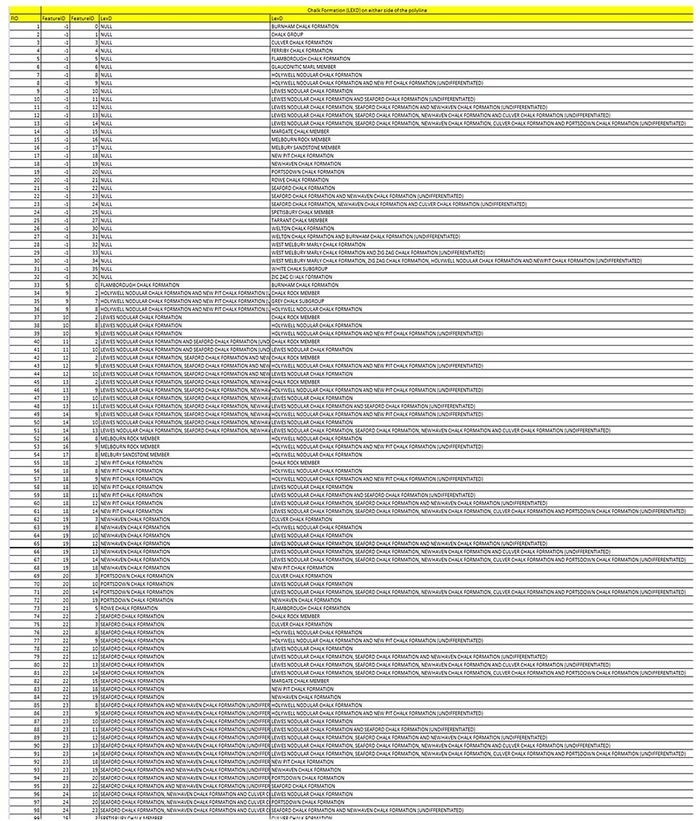
These were manually sorted and selected to provide true stratigraphic contacts for the Chalk Formations shown below:
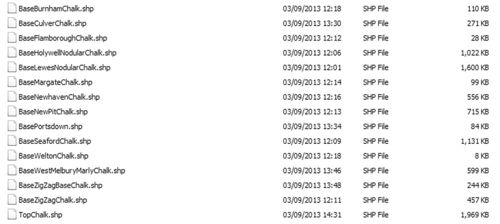
Polyline shapefiles were imported to SKUA (Subsurface Knowledge Unified Approach; a 3D modelling package that uses 'stratigraphical rules' to import and integrate a wide variety of 3D data) and given a Z-attribution using the BGS bald earth digital terrain model.
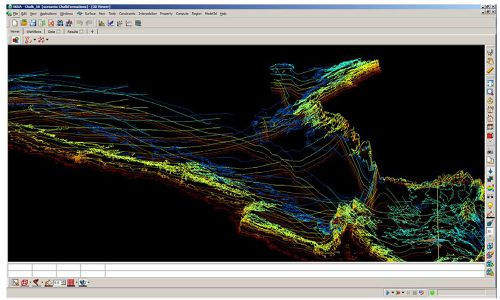
The Z-attributed linework is shown above with Chalk Group cross-section picks from the NGM GB model. The two datasets can be used to generate a preliminary Chalk structural model.